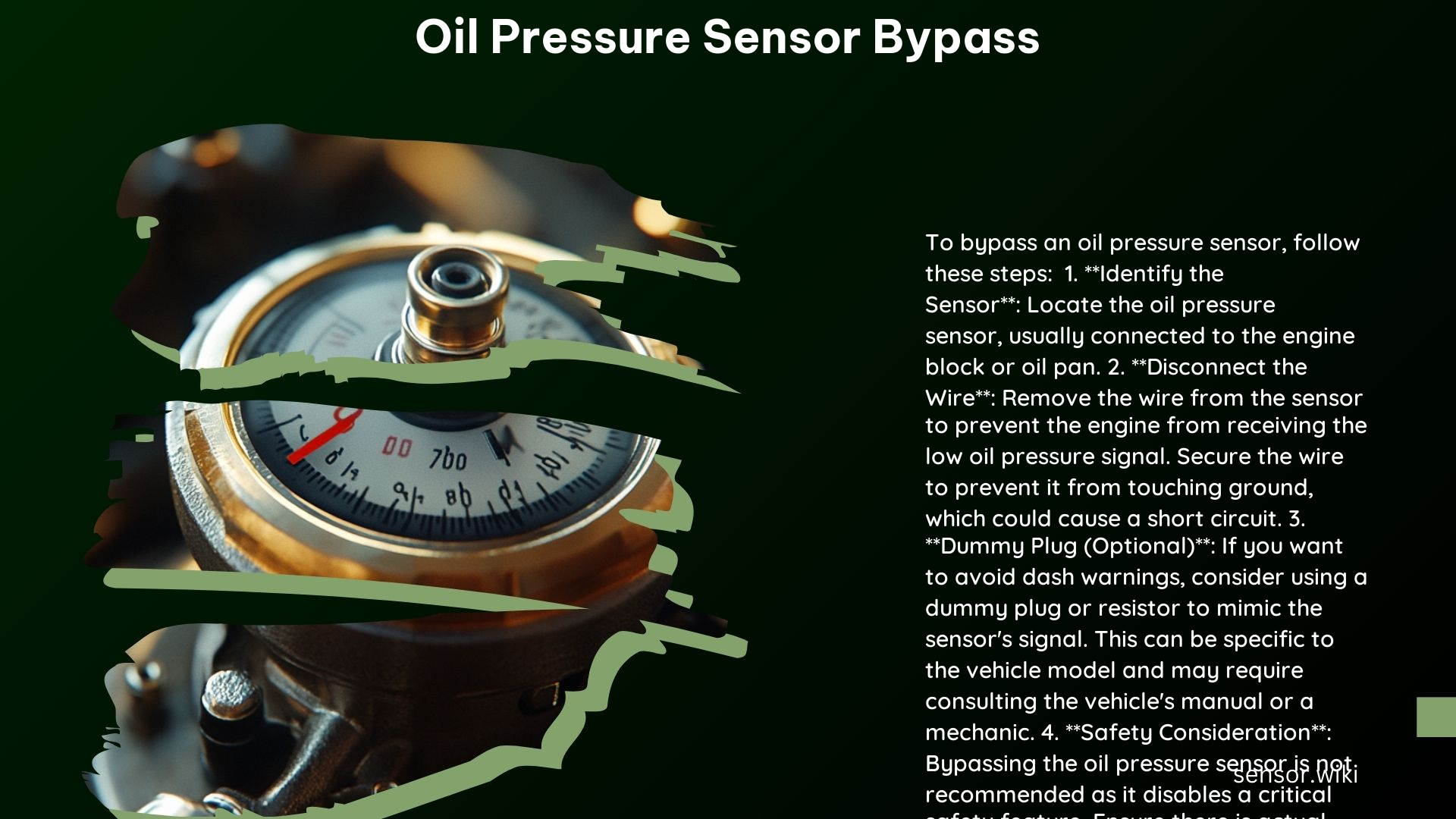Comprehensive Guide to Oil Pressure Sensor Bypass
Symptoms of a Bad Oil Pressure Sensor
Before bypassing the oil pressure sensor, it is crucial to identify the symptoms that indicate a faulty sensor. These symptoms may include:
- Low Oil Pressure Readings: The gauge may show zero or abnormally low pressure readings, even when the engine has sufficient oil pressure.
- Warning Lights: The dashboard may display warning lights such as “CHECK GAUGE” or “LOW OIL PRESSURE” lights.
- Engine Performance Issues: The engine may not run smoothly or may shut off due to the sensor’s incorrect readings.
What Tools and Materials are Needed to Bypass the Oil Pressure Sensor?
To bypass the oil pressure sensor, you will need:
- Multimeter: To measure resistance and ensure the correct wiring configuration.
- Resistors: Depending on the type of sensor, you may need resistors to mimic the normal resistance of the sensor.
- Wiring and Connectors: To connect the bypass circuit safely.
- Manual Oil Pressure Gauge: To verify that the engine has good oil pressure.
How to Bypass the Oil Pressure Sensor?
- Verify Engine Oil Pressure:
-
Install a manual oil pressure gauge to ensure the engine has good oil pressure. This step is crucial to avoid damaging the engine.
-
Identify the Sensor Type:
-
Determine if the oil pressure sensor is a switch or a variable resistance sender. Switch-type sensors open or close based on pressure, while variable resistance senders change resistance with pressure.
-
Locate the Sensor and Wiring:
-
Find the oil pressure sensor and its wiring. Typically, this involves tracing the wires from the sensor to the engine control unit (ECU) or instrument cluster.
-
Disconnect the Sensor:
-
Carefully disconnect the wiring connector from the oil pressure sensor. This may involve removing an access panel or other components to access the sensor.
-
Bypass Configuration:
- For Switch-Type Sensors:
- If the sensor is a switch that opens on pressure rise, you can unhook the cable from the unplumbed switch.
- If the sensor is a switch that closes on pressure rise, short the cable at the connector to mimic the closed state.
-
For Variable Resistance Senders:
- Measure the resistance of the sensor at normal operating pressure using a multimeter. Then, connect resistors in place of the sensor to mimic this resistance.
-
Safety Precautions:
- Ensure the engine is cool before starting any work.
- Use proper wiring techniques to avoid short circuits or electrical damage.
- Verify that the bypass does not trigger any warning lights or alarms that could indicate a problem to the ECU or driver.
Is it Feasible to Jump the Oil Pressure Sensor Wires?
Jumping the oil pressure sensor wires is feasible but must be done carefully to avoid damaging the electrical system or misleading the ECU.
- Shorting the Wires:
- For switch-type sensors, shorting the wires can mimic the closed state, allowing the engine to run. However, this should be done with caution and only temporarily to diagnose issues.
- For variable resistance senders, simply shorting the wires is not sufficient; you need to replicate the correct resistance.
What Troubleshooting Techniques can be Used?
- Use a Multimeter: To measure resistance and voltage at the sensor and wiring.
- Check Wiring and Connectors: Ensure all connections are clean and secure.
- Consult the Owner’s Manual: For specific instructions on bypassing the oil pressure sensor for your particular vehicle.

